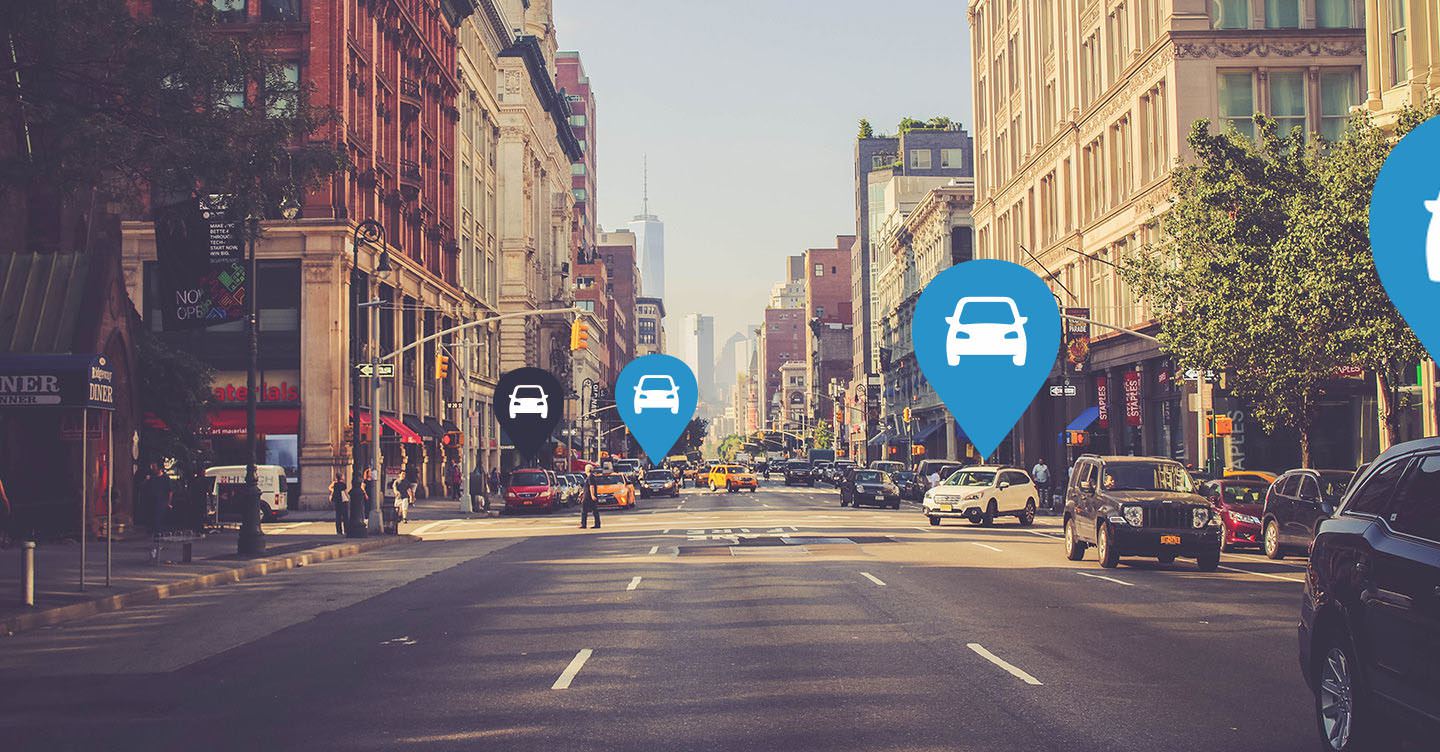Navigating new mobility in our cities

The future of the automotive industry is a hot topic these days, especially when it comes to urban mobility. Indeed, the increase in urban density, rising cost of car ownership, insufficient infrastructure to sustain urban growth and the high adoption rate of smartphones have laid the foundation for a series of new services. While one-way carsharing (Station Based and Free-Floating) is less known than ride-hailing in the US, it’s still one of the fastest growing trends among millennials in Europe and North America. And this is just the beginning!
People in cities are looking for mobility options that offer them flexibility, convenience and affordability. One-way carsharing scores very high on all three aspects, and free-floating scores even higher. These services will only keep getting better, and to top it all off, technology is now available to give operators the means they need to build their operation in record time.
Certain questions systematically come up when planning the launch of a one-way or free-floating carsharing service. From choosing the number of cars to roll out at first to figuring out adequate insurance policies, or a best-in-class marketing strategy, there are a lot of decisions to be made. Perhaps the most obvious and glaring interrogation, however, is “Where to launch the service?” The answer, unfortunately, isn’t one-size-fits-all, as there are many variables to factor into the equation. To be successful, operators should consider launching services in cities that score well in the following categories:
- The Potential User Base
The number of potential users in a city and the demographics -- average age, occupation and income level -- are among the top things to be on the lookout for. For this purpose, it should be known that the average age of members typically ranges between 30 and 35.
As opposed to reservation-based carsharing, one-way services typically enable users to access a vehicle instantly. They also have much faster uptake. However, new services must still account for an educational period -- a non-recurring portion of the marketing budget -- when entering a market.
- Competitive Landscape
The obvious competition to a new entrant would be an existing carsharing service or e-hailing service such as Uber or Lyft. A few services co-existing in a city could actually end up benefiting a new entrant, notably by reducing the education of potential users.
The biggest competitor to carsharing is individual car ownership. A survey of free-floating carsharing members in Seattle revealed that 14 percent of them had given up a vehicle since joining a service, and half of them confirmed that the availability of free-floating cars played some part in that. The combination of three or four services would augment coverage of a city, most likely increasing the user’s reliance on the services.
- Is the City “Free-Floating Compatible?”
In this regard, population density is very important. Simply put, the higher the density, the better.
However, other factors come into play. For example, a city with three universities will typically yield more users than a city known for being a tourist haven.You also have to look at parking availability to determine whether a city could become a good home for a fleet. If there is a lot of available parking, then it should make it easy for users to park the cars, making the service more convenient and desirable.
- Municipal Support
Regulation and support from the city comes in different forms, most important, is parking. Ideally, a city will agree to provide parking spots to a carsharing operator either for rent or for free (under certain conditions). In any event, municipal support can be a major contributor to the success of a project, or an important obstacle if lack thereof.
Public infrastructure is even more important for a fleet of electric vehicles. Cities can encourage and offer charging stations, as is the case in Copenhagen where Green Mobility users can park at charging stations.
- Synergies
If a carsharing operation is tied to an existing organization that sells X, Y and Z products or services, it is important to determine whether a given city offers cost advantages. For example, a network of car dealerships can benefit from operational synergies from service and parking locations for no incremental cost.
In addition, every subscriber to a service represents an additional pair of eyeballs that can be marketed to. If a given market is more strategic on that front, then it should be moved closer to the top of the list.
When combining the right city with a well marketed service, the operator of a free floating fleet can reach impressive heights in a short period of time and truly alter the fabric of a city. Take Evo for example, the successful initiative from the British Columbia Automobile Association. It launched in early 2015 with 250 cars in Vancouver and has grown steadily in the past two years, reaching 1,250 cars today. When a service reaches that scale in a single city, not only can the financial results become interesting, but it has the chance to gain the hearts of the citizens and affect some real lasting change in the popular consumption of mobility services.
Image Credit: Vulog
 Alex Thibault is the VP of Business Development for Vulog, where he is responsible for the company’s growth in North America. As such, he works with partners to build, and deliver, top-of-the-line technologies to power new world-class mobility services. He joined Vulog in 2016 after spending the last 10 years as a corporate lawyer and tech entrepreneur. Most recently, he was a partner at a fast growing tech-oriented law firm where he worked with clients in the mobility industry, among others. He also holds an MBA from UCLA Anderson School of Management.
Alex Thibault is the VP of Business Development for Vulog, where he is responsible for the company’s growth in North America. As such, he works with partners to build, and deliver, top-of-the-line technologies to power new world-class mobility services. He joined Vulog in 2016 after spending the last 10 years as a corporate lawyer and tech entrepreneur. Most recently, he was a partner at a fast growing tech-oriented law firm where he worked with clients in the mobility industry, among others. He also holds an MBA from UCLA Anderson School of Management.
